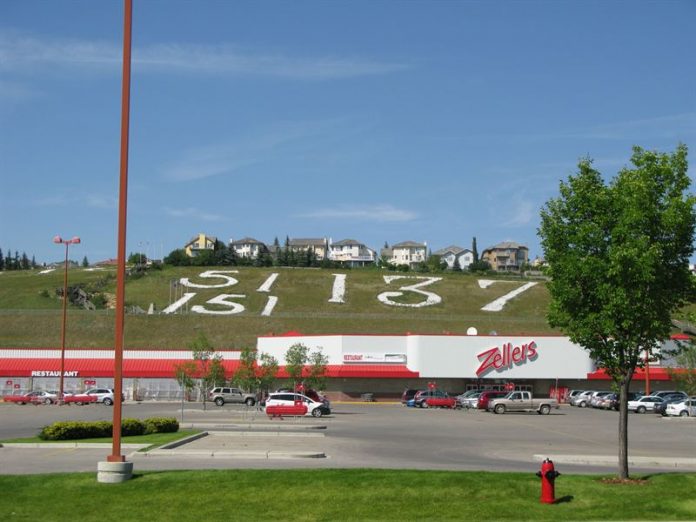3020 Signal Hill Dr. S.W., Signal Hill
The Battalion Numbers symbolize Calgary’s role as home to the second largest military training centre in Canada during the First World War. In 1905 Calgary became the headquarters for Military District No.13. Summer training camps for Alberta’s militia cavalry were first held on Colonel Walker’s estate in the Inglewood district, and moved in 1911 to a southwest Calgary site known as Reservoir Park. Shortly after the First World War began in 1914, the Canadian militia leased a nearby parcel of land from the Tsuu T’ina Nation and established a larger site called Sarcee Camp. This tented city, complete with wooden administrative buildings and electric, water and streetcar service, was Alberta’s only training camp during the war.
The Battalion Numbers have event value due to their association with World War I, which had a profound social and cultural impact on Calgary, and they have activity value associated with the training of more than 45,000 Canadian Expeditionary Force personnel at Sarcee Camp. The first units arrived from across Alberta in May 1915, including the 51st Infantry Battalion, recruited in Edmonton. Among other units commemorated in Battalion Park, the 113th (Lethbridge Highlanders) Infantry Battalion, the 137th Infantry Battalion (recruited in Calgary) and the 151st (Central Alberta) Battalion all completed training during the camp’s second season in 1916. When deployed overseas, all four units were broken up as replacements for others on the battlefield.
The numerals have construction value as an example of the British military custom of creating rock art to commemorate regimental units. As a form of spirited competition and a conditioning exercise, each unit that trained at Sarcee Camp left its mark by fashioning a large stone figure of its regimental badge in the avenue that marked its section of the camp. In a more unique local expression of this custom, some battalions also laid out their unit numbers in massive stone formations along the ridges north and west of the camp before they embarked for service overseas. The outlines were first plotted out by military engineers, then filled in by fatigue parties who gathered thousands of fieldstones from the surrounding area and laboriously placed them into the hillside. Some two-dozen whitewashed figures covered the hills around Sarcee Camp by 1916, when recruitment for numbered overseas battalions ceased, along with the practice of building rock signs.
The construction of large scale, non-Aboriginal geoglyph formations is rare, and these are the only stone monuments of their type known to remain in Alberta. The numbers are unique in that they commemorate the very men who carried out their design and construction. Over the past century various military and paramilitary organizations in Calgary, including local garrisons, veterans of the 137th Battalion, and members of the Royal Canadian Legion have continued the tradition of whitewashing or painting the numbers as an act of remembrance. The commemorative function of the numbers was formalized in 1991 with the development of Battalion Park.
The monuments gave their name to the surrounding area, which was known as Cairn Hill until renamed Signal Hill in 1982. Despite extensive residential and commercial growth since that time, the numbers continue to inform the character of the area.










